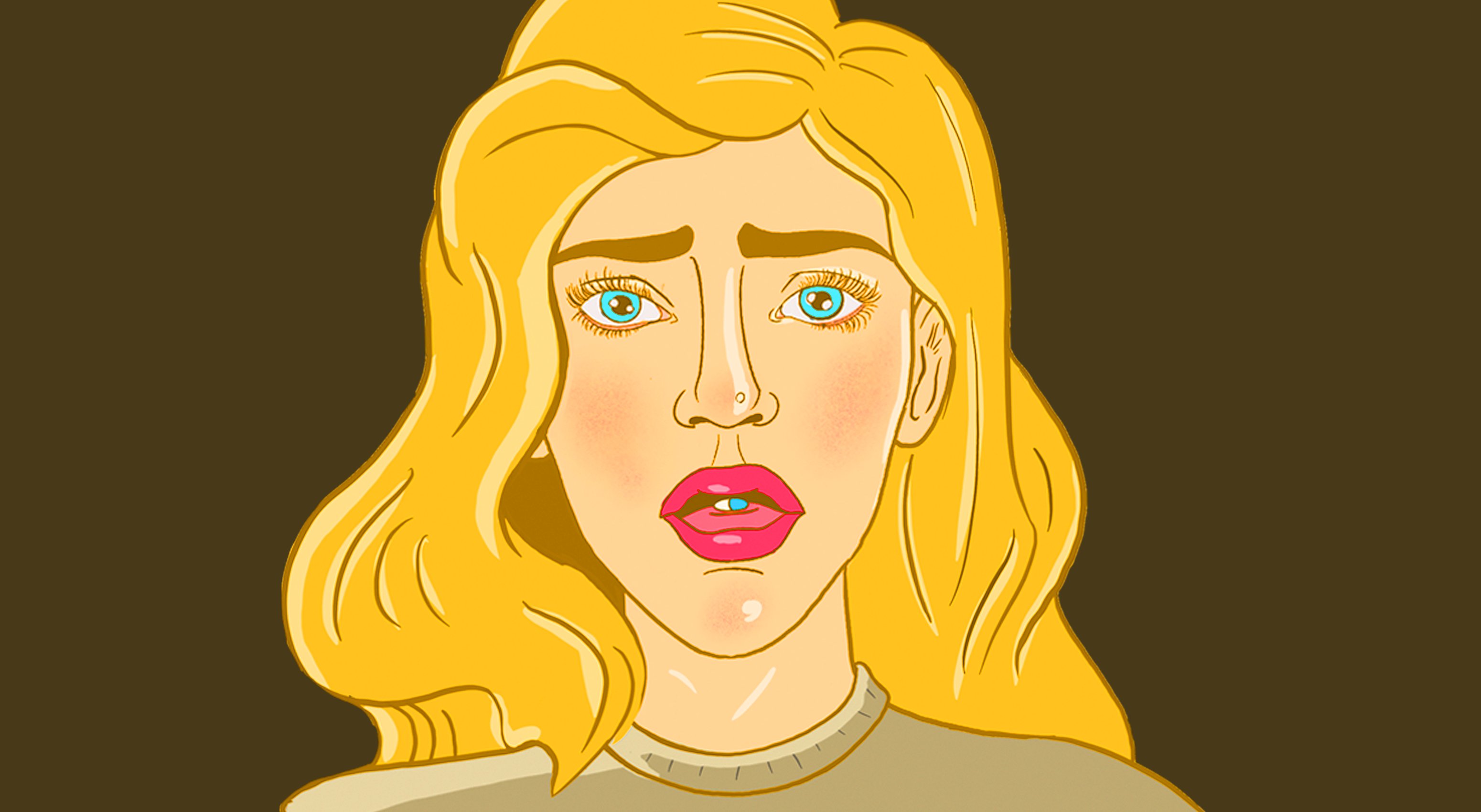ADHD’s impact and place as a mental health condition
I am perpetually late. No matter how hard I try to be on time for something, whether that’s school, a work meeting, or a social event, I always find myself rushing to leave the house five minutes before I’m expected to arrive to my destination. In Grade 4, my teacher even called me out on it at the end of the year with what I like to call Shame Awards, announcing to the class just how many times I had been late that year. Things haven’t really improved since then.
I always thought it was just an unfortunate personality trait. Just the same as being messy, or a bad listener, or blunt, all of which also apply to me. It wasn’t until I watched Netflix’s documentary about Adderall abuse, Take Your Pills, that I realized no, I’m not a quirky manic pixie dream girl… I might just be one of the four per cent of adults who suffer from Attention Deficit Hyperactivity Disorder (ADHD).
So what is ADHD?
ADHD is characterized as a disability, neurodevelopmental disorder, and mental health condition, as per the Diagnostic and Statistical Manual of Mental Disorders (DSM-5). It affects executive functioning such as working memory, planning, time management, and organizational skills, and is often recognized through symptoms including impulsiveness, procrastination, fidgeting, and a lack of focus. These are all things that hit close to home.
There are three presentations of ADHD: Predominantly inattentive, predominantly hyperactive, and combined.
According to the Centre for ADHD Awareness Canada (CADDAC), five per cent of children are diagnosed with ADHD, 80 per cent of which maintain the diagnosis into adolescence, with 60 per cent affected into adulthood. In order to get a diagnosis as an adult, an assessment must prove that symptoms presented themselves before the age of 12.
After many attempts at self-diagnosis, and annoying my friends, I saw a psychologist for an assessment. I spent last summer taking tests, filling out forms, and hoping for a positive diagnosis, for something to finally explain why I am the way that I am. In October 2018, I got it.
My initial reaction was relief, followed by dejection, with a hint of skepticism.
Like many adults diagnosed with ADHD, I had, and still have, a lot of internalized stigma.
Common misconceptions
There’s a perception that ADHD isn’t a real or legitimate disorder, when in actuality it is much more complex than it seems.
“There’s still a lot of misbelief out there, or this view or understanding that, ‘well it’s just a bunch of little boys who are hyperactive or can’t pay attention’, or ‘they’re just undisciplined, they’ll grow out of it, it’s not a big deal,’” Heidi Bernhardt, president, founder, and executive coordinator of the CADDAC told the Fulcrum.
“For some people it’s almost a joke, like ‘yeah yeah yeah I had my ADHD day yesterday,’” she said, “when we know … it’s so different to have it 24/7.”
The CADDAC’s job is to debunk these myths and misconceptions that act as barriers to educating people and raising awareness about the disorder.
“Most people don’t understand (that for most people diagnosed with ADHD in childhood) it continues through their entire life cycle, it impacts all areas of functioning,” Bernhardt, who has a background in psychiatric nursing and a husband and three adult sons with ADHD, explained.
“If people understand it at all, they sort of understand the tip of the iceberg,” she said. But for Bernhardt, “sometimes that is more of an issue than if they didn’t understand anything at all, because that’s what fuels the misconception that it’s not a serious disorder … when we know it’s got huge socio-economic costs, it’s got huge costs to the individual, (and) healthcare costs.”
Bernhardt said she feels that a lot of the misconceptions surrounding ADHD come from depictions of the disorder in media, where it’s sensationalized and described with inaccurate facts regarding over-diagnosis and medication.
“The media portrays it as parents dying to medicate their kids,” Bernhardt said. However, she explained that in her years of working with parents not once has someone been overly eager to start their child on medication.
“Generally when we discuss incidence, we quote worldwide rates of ADHD,” Bernhardt explained. “Canada doesn’t do a whole lot of research on incident rates, and it drives me nuts when journalists use incident rates or the situation in the U.S. and apply it as though we’re the same — we’re not.”
While she admitted that some pockets in Canada may be prone to over-diagnosing children with ADHD, such as Quebec, Bernhardt maintained that more research needs to be done on why this happens in specific parts of the country, and insists that in her opinion the disorder is nationally underdiagnosed, particularly among adults, young girls, and women.
“Generally in Canada, we’re still underdiagnosing ADHD, and very often … missing the profile of ADHD without the hyperactivity (which is most common in female patients),” she said.
According to Bernhardt, women with ADHD often get diagnosed with depression or anxiety instead, which doesn’t address the entire condition — something I can attest to.
ADHD and mental health
I spent a lot of my childhood quitting various extracurricular activities, doing poorly in school, and generally feeling like a failure. No amount of tutoring helped, and teachers, parents, and counsellors alike all blamed me for my inability to focus. I was urged to try harder, to be less lazy. Part of me believed my struggle was due in part to depression, but what I didn’t realize was that my depression went hand in hand with my ADHD.
While ADHD is in itself recognized in the DSM-5, the diagnosis can also carry coexisting mental illnesses. In fact, because some of the symptoms of ADHD are present in other mental illnesses, it is often difficult to assess.
“You can have ADHD and a total separate coexisting disorder that would exist without the ADHD, but very often we find that when people are not diagnosed and treated with ADHD (when they’re) younger, it’s very very common for them to develop anxiety and depression as a coexisting disorder,” Bernhardt said.
“(It) makes perfect sense when you think about all the struggles and the negative messaging that person has received their entire lifetime.”
Bernhardt explained that many medical professionals still lack the training needed to assess adult ADHD, causing them to misdiagnose, or only diagnose anxiety and depression in adult patients while overlooking the ADHD itself.
“The difficulty is if we never treat the underlying ADHD we won’t be able to successfully treat the anxiety and depression because that’s what’s driving it,” she said. “We do find for some people that if we treat the ADHD, their anxiety and depression gets better.”
The assessment for ADHD also includes a thorough screening process for other disorders, learning disabilities, and substance abuse, which can go hand in hand with the disorder.
It’s actually extremely uncommon for adults to have ADHD without a coexisting disorder,” Bernhardt said.
So I got the diagnosis. But how do I treat it?
“Pills don’t teach skills”
Treatment for ADHD should always be multi-modal, Bernhardt said, explaining that while medication is an option, not everyone with ADHD needs it.
After all, according to Bernhardt, “pills don’t teach skills.”
“The first step is what we call psychoeducation. We always want to educate the adult about what ADHD is.”
The CADDAC works with patients and parents to teach them coping strategies, offer them resources, and educate them about the condition.
Treatment options for adults include cognitive behavioural therapy, mindfulness, and tutoring on executive functioning impairment. Medication comes in when people with ADHD struggle with attention or emotional dysregulation, and hyperactivity.
For Bernhardt, medication is “not a magic pill.”
“Start low, go slow,” she told me, describing the best approach to using medication. “We don’t know why certain ADHD medications will work like a dream for somebody and not work for someone else.”
Like most mental health medications, “to date, some of this is still a matter of trial and error,” Bernhardt said. This is something I’m still coming to terms with.
Common side effects for stimulant medication — which is the most effective for treating symptoms of ADHD — include suppressed appetite, headache, dry mouth, and trouble sleeping, all of which my doctor made me aware of when I first started taking Vyvanse.
What she didn’t mention was that rare side effects may include mood disorders like extreme euphoria or depressive episodes.
“Be very aware that changes in mood, anxiety level, any type of mental health functioning changes … could be a side effect across the board for mental health medication,” Bernhardt advised.
While medication is just one part of the treatment, and discussing the side effects are important, Bernhardt also explained that there are significant side effects to not treating ADHD — which most people don’t talk about.
“They talk about the side effects for the medication, but they don’t look at things like a third of our prison inmates have undiagnosed ADHD,” Bernhardt said, referencing a policy report published by the CADDAC on the issue.
“There are ramifications — we have far fewer kids with ADHD who graduate high school and go on to … complete post-secondary,” she said.
The Canadian Press recently published an article with similar findings, citing a report from Statistics Canada which found that only 36 per cent of adults with a neurodevelopmental and mental health condition enrolled in post-secondary education.
However, the risks of untreated ADHD exceed enrollment rates.
“(There are) much higher risks of mental health disorders, substance abuse, addiction in the ADHD population,” Bernhardt said, speaking to the impact the disorder can have on life expectancy.
“For a child who is diagnosed with ADHD but it doesn’t carry into their adulthood, we’re looking at close to nine years less life expectancy (than someone without ADHD) — when you’re talking about it reaching adulthood, you’re talking 13 years plus of reduced life expectancy.”
“So people go ‘oh I don’t want to go on the meds, because there are side effects’ well yeah, but there are very significant side effects to not treating ADHD (too),” Bernhardt explained.
Fighting the stigma
“There’s still this stigma and misunderstanding,” Bernhardt said. “Unfortunately, it’s this cycle — if we don’t talk about it, we don’t reduce the stigma, if we don’t reduce the stigma, we can’t get people to talk about it.”
Part of the CADDAC’s mandate involves raising awareness and advocating for the condition, something Bernhardt said they do through workshops, conferences, webinars, and policy papers.
The CADDAC is currently in the midst of planning a full-day session at the University of Ottawa on May 4, geared for parents of kids with ADHD, educators, and adults with ADHD, but in the meantime, the organization is raising awareness through social media.
“Right now, we have a campaign called ADHD Speaks,” she explained. “We’re trying to get people to share their stories — we’ve got videos (of) celebrities, but also medical professionals, and just everyday people talking about their ADHD.”
“Send us your story, write a message, what do you feel about ADHD, write it on a Post-it note, take a picture and send it to us,” she urged.
These videos and letters are shared on the CADDAC’s website and social media pages.
But Bernhardt said she finds it very difficult to get people to open up.
“We can’t find too many celebrities to speak out on it, there are a lot of business (workers) and politicians who will talk to us one-on-one, but if you ask them to come out and talk about it they’re still very reluctant,” she shared.
“A lot of adults have said, if I come out and speak about it, if I have a future employer and they Google me and my name comes up with ADHD, it may cost me a job.”
“We need to do a better job at educating employers,” she said. “For some jobs, ADHD can actually be a benefit, but it’s understanding that.”
In one article, the Toronto Star profiled four adult women with ADHD, all of whom are entrepreneurs. All four women attributed their success to symptoms of ADHD usually seen in a negative light such as their risk-taking tendencies, creativity, adaptability, and ability to perform better under pressure.
“I do think that whole risk-taking factor is probably common in people with ADHD because the desire for change is very common in someone with ADHD,” Ottawa business coach Lara Wellman told the Star. “It means you’re willing to push the envelope to avoid boredom. Where other people are happy with consistency, we’re not.”
ADHD in the classroom
Having ADHD can feel extremely discouraging. Every late assignment, every missed appointment, every lost item, or an impossible trip to the grocery store — every time my room somehow gets messy after I just cleaned it — feels like an insurmountable failure, and it adds up, especially as a student. In what should be the last year of my degree, I’m still picking courses for next year.
But all hope is not lost. Bernhardt advises that one way to manage symptoms for students includes asking for academic accommodations, and doing it early.
“If you have ADHD, it is recognized as a disability, you do have the right for accommodations around your ADHD in the post-secondary setting, and if your university is telling you that you need a $3,000 psychoeducational assessment to get that, that is wrong,” she said.
“Challenge them on that. Call me. I’m very happy to talk to universities and colleges — they should not be doing that.”
The CADDAC offers resources on their website tailored for students and physicians, to help them write a diagnostic report that can be used to gain accommodations.
“Get that report in to your access centre, get the accommodations that you need, even if you don’t ever use them,” she said. “What happens with a lot of these students is they get to post-secondary they think they don’t need help, they can do it on their own …They wait, they get behind in handing in a paper, they freeze in an exam, their anxiety kicks in, they run out of their medication, and very often we get the calls after they failed the course, or the year.”
“Most students with ADHD, especially if they get to the post-secondary level, are bright enough to learn the material, that’s not the problem, it’s their executive functioning skills — organization, time management, planning, working memory, that’s what sinks them.”
Dr. Philippe Robaey, head of the ADHD team at the Children’s Hospital of Eastern Ontario, and psychology professor at the U of O agreed, telling the Canadian Press that organizational skills are the biggest challenge facing students with ADHD.
For Robaey, academic accommodations like individualized learning plans need to be put in place from high school in order to set students up for success.
At the U of O, the Student Academic Success Service offers accommodations such as time and a half for exams, extensions for assignments and other tools to help students with ADHD succeed.
If you think you might have ADHD, the first step is talking to your doctor. Everyone experiences some symptoms of ADHD sometimes, but if you find that they are interfering with your ability to function on a day to day basis, talking to your doctor is a good start to getting referred to a specialist.





